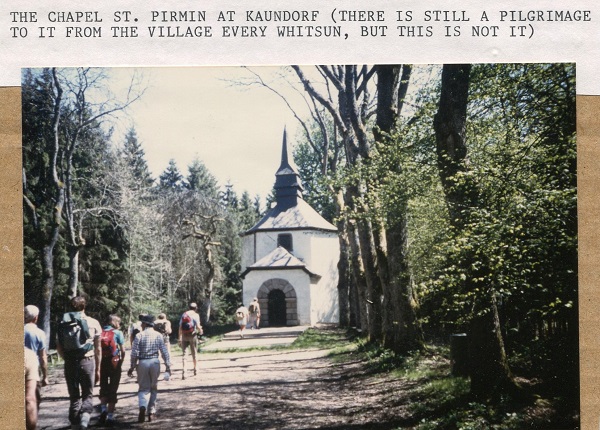 St Pirmin chapel;
Credit: David Heal
St Pirmin chapel;
Credit: David Heal
Chronicle.lu has teamed up with local author and tour guide David Heal of Luxembourg Battles for a historical series.
Based on David Heal's extensive research spanning several decades (and documented in the form of place-name index cards), the series aims to present interesting local historical events and facts linked to places in (and around) Luxembourg.
Next up is a look at the history of Kaundorf, a fairly small village just north of the lake at Esch-sur-Sûre, and on the heights.
According to David, the name comes from an old term connected to the burning of the fields after the clearing of the forest to allow agriculture. The burning got rid of all the roots, and so on, as well as pests.
Just outside the village is the chapel of St Pirmin, which is said to have been founded by a monk called Pirminus in the 8th century. There is a spring below the chapel which is said to cure illnesses such as eye disorders. There is a procession at the chapel every Whit Monday.
As one comes into the village from Esch-sur-Sûre, there is a car park on the left with a bomb as a war memorial. Follow the Auto-Pédestre sign marked with a B. It is a ten-minute walk, but eventually one will find a reconstructed hideout which is probably the most famous of them. There are photographs which show several young men there - unusually, noted David, one of them has a gun.
The WWII bunker was where deserted forced conscripts would hide until liberation from Nazi occupation. It may seem very easy to find, but David recalled that during the war there was no path to it, and there was no lake. This was quite an isolated part of the forest.
There is no need to go back the way one came, added David. If one continues to follow the path (climbing a short staircase), one will – turning right - come back to the village quite quickly, passing the church - of note, there is a plaque in the entrance listing all the priests who have been there since the early 16th century. It is then easy to go up the main road and back to the car park.
There is nothing there now in the refreshment line, but there used to be a restaurant and also a shop/café. David explained that this was run by a German man, who has since died, but who was stationed there during the war. He liked the village so much that he stayed on after the war.








